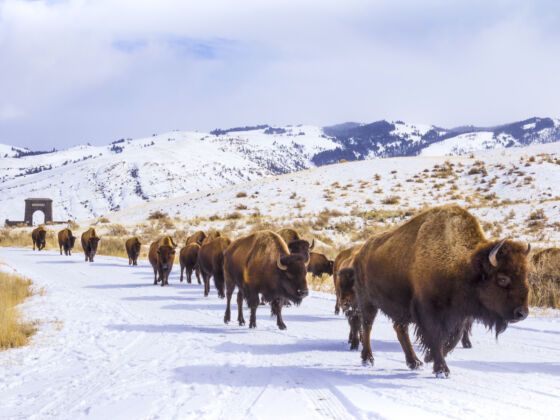HAVING GOOD INTENTIONS WITHOUT the right knowledge can sometimes be as destructive as having bad intentions. The latest example of this depressing truth is the story of the bison calf in Yellowstone from this past week. On Monday, May 9th, a couple of tourists — a father and a son — came across a bison calf, and thought it looked cold. So they put it into their car and drove it to the Yellowstone rangers.


Yellowstone Had to Put Down a Bison Calf After Tourists Tried to Rescue It
There were a couple of problems with this. First, it wasn’t particularly cold by Yellowstone standards, with a low of 39 and a high of 50, which bison are more than capable of dealing with. Second, as a result of the interference, the calf was rejected by its herd, despite multiple attempts to reunite it with its mother by park rangers. As a result, the calf started approaching people and cars on the road, which was a safety hazard. So the rangers had no choice but to euthanize the calf, which would have eventually died anyway, as it was still dependent on its mother’s milk.
The tourists who brought the calf in had not meant to harm the calf — by all accounts at the park, they were only trying to help save its life — but they ended up killing it. The tourists were given a ticket to the tune of $110, and the park is considering pressing further charges.
Park visitors are not supposed to approach bison, as they are incredibly dangerous. Just this year, guests to the park have been gored while trying to take selfies with the new National Mammal. Even if the calf had been freezing, the park likely wouldn’t have stepped in to save it. “In Yellowstone, it’s not a zoo. We don’t manage for individuals; we manage for ecosystems,” a park spokesperson told the Washington Post. Calves regularly die, either due to the elements, or because they were taken by a predator.
After an uproar on social media, the park clarified that it couldn’t move the calf somewhere else because the park’s bison are under quarantine to prevent the spread of certain diseases, and because they simply don’t have the resources to care for a single calf for the length of time it would take.
It’s important to remember, when you go into the wilderness, that a) animals aren’t humans, and shouldn’t be treated as such, b) if you don’t know what you’re doing, the best call is to not interfere. If you do interfere without knowing what you’re doing, you could end up like these two tourists — doing the exact thing you wished to prevent.